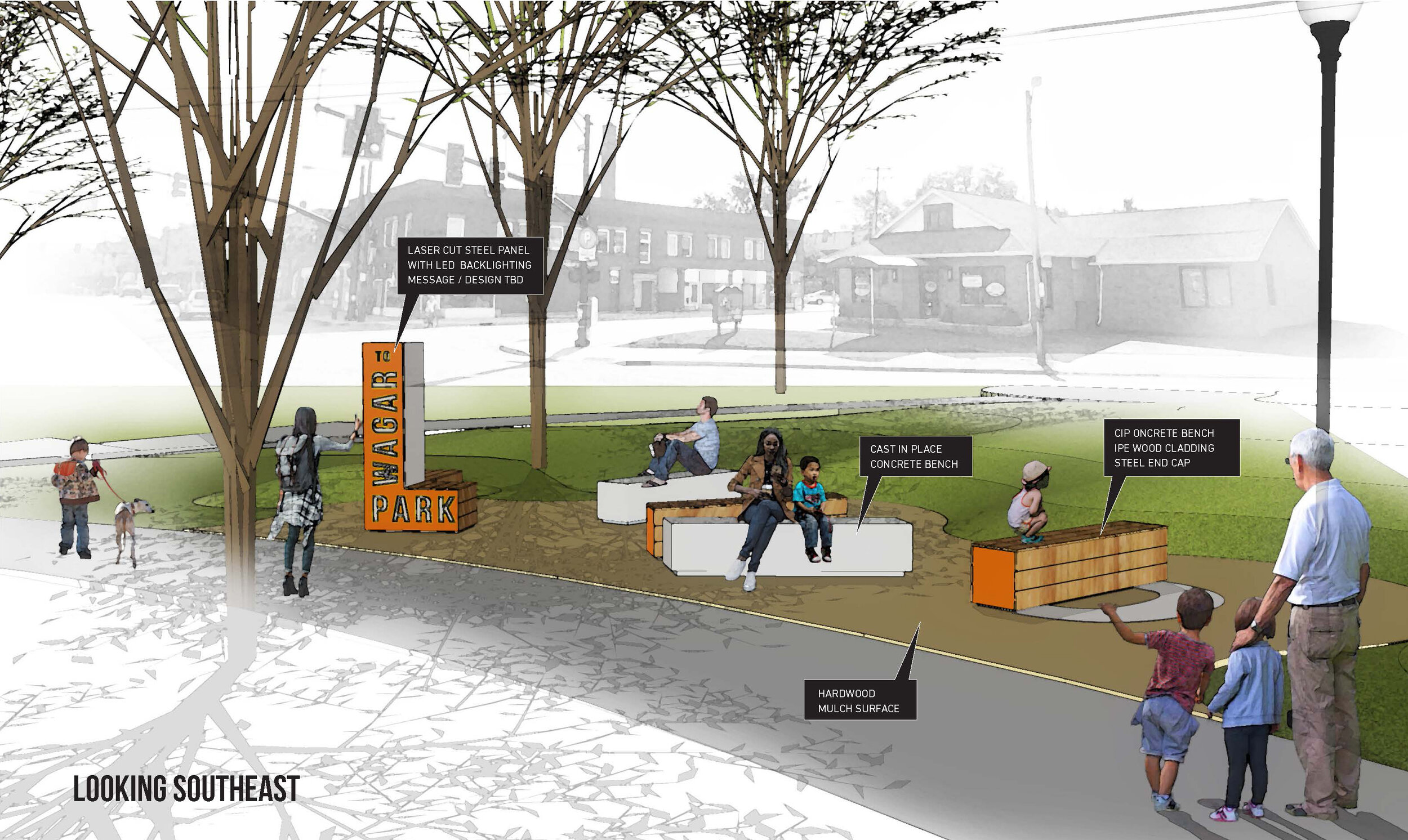
Five Minutes with Lisl Kotheimer
Associate, Landscape Architect Lisl Kotheimer’s professional interests center around design representation, communication, critical inquiry, and strategy. We sat down with her to better understand her approach to placemaking and design.
How does your personal design philosophy inform your approach to designing places for people?
I am constantly thinking about space and the human experience as I go about my day. You have to think about space from a lot of different perspectives. This can be very technical – like considering traffic or accessibility or it can be artful and experiential. How will a person experience this space for the first time? What about a person who visits this place on a daily basis? This is the root of the word “placemaking” – how do we pack a ton of potential into a public space but keep it grounded enough for the day to day experience. We designed a stage in Easton’s new Urban District, a mixed use (dining/commercial/retail) development in Columbus, Ohio, that rolls on a track – like a giant 60-foot-wide pushcart. The operations team at Easton can move the stage to a different position within the public space to create an entirely new room and experience – it is a framework for activity, and it keeps people coming back for more.
What have you learned in working with artists and other designers in order to achieve successful project outcomes?
One of the most important strategies for realizing a vision is to get the right team together for the job. As Landscape Architects, we tend to wear many hats, but our ability and expertise is not limitless - some of our most successful designs are the product of a great collaboration. For example, at the center of Promenade Park in Toledo, Ohio there is a walkway that slopes from the street down to the Maumee River. MKSK worked with the Arts Commission to site a sculpture by artists Kristine Rumman and Dane Turpening within the sloping landscape. We also engaged the expertise of Landscape Forms to realize a digitally designed and fabricated seat wall that slopes along the path. The composition of the park site and these specially designed elements make for a fantastic landscape experience that is both functional and playful.
We recently designed two smaller scale placemaking projects in the Cleveland area. Both were small city parks centered in dense neighborhoods with rich histories. The City of Lakewood, Ohio put out a call for artists to design a public seating element in Wagar Park that would be a welcoming social gathering place for the surrounding neighborhood. MKSK partnered with our friends KGK in northeastern Ohio and completed the project with a design-build delivery. It turned out great! In Cleveland Heights, we designed a pocket park that would be the framework for public art and entertainment programming. Adjacent to the Cedar Lee Theater and Heights Arts, we designed a park that could take on the art and culture of the neighborhood over time with input from community groups and arts organizations. For both of these projects, it was really important to understand that we were designing places that the communities would call their own and would be the foundation for social interactions, personal expression, and public events in the future.
In the age of Instagram and social media in general, photo ops and experiences are really important in public space design. We want to make places that are memorable that people want to return to again and again. In Easton’s Urban District we have a strategy of “layering in the whimsy.” We designed a few signature placemaking elements that make the Urban District a true “place” within Easton. Someone can say “meet me at the umbrella alley” or they can do a photo shoot under the bike rainbow. Since the new district has been open, more murals and fun elements have been added – so there is always something new and exciting for guests. Recently, colorful swings were hung from the canopy of the stage, and I don’t think there is a moment during operating hours when the swings go unoccupied.





